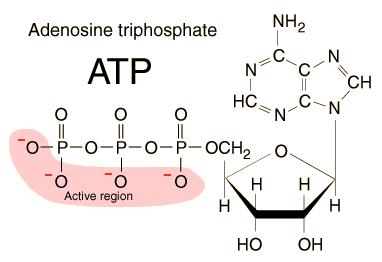ATP Full Form | What is Adenosine Triphosphate
What is the full form of ATP
ATP: Adenosine Triphosphate
ATP stands for Adenosine Triphosphate. It a high-energy molecule found in the cells of the human body, animals, plants, etc. It is capable of storing and supplying the energy needed by cells. So, it is commonly known as the energy currency of the cell.

The human body is made up of different types of cells. Each type of cells performs a specific function that helps organisms to perform tasks necessary for survival. For example, nerve cells communicate messages to the brain and allow us to think, make decisions and more. Similarly, muscle cells help us to produce force and motion, maintain posture, and contraction of organs, and more. Cells need the energy to perform these tasks, which is provided by ATP.
The food that we eat is gradually oxidized in the cells and energy is released, which is used to produce the ATP so that a continuous supply of ATP is maintained. In simple words, we store the energy obtained from the breakdown of food as ATP. Similarly, plants store energy produced during photosynthesis in ATP molecules.
Structure of ATP:
ATP is a nucleotide which is made up of an adenosine molecule (adenine base attached to a ribose sugar), which is further connected to three phosphate groups by phosphoanhydride bonds. So, it has three main parts: adenine (a nitrogenous base), a sugar (ribose), and a triphosphate (three phosphate groups). These parts are connected together into a single molecule through condensation reactions. When only one phosphate group is attached, this compound is known as adenosine monophosphate (AMP), when one more group is attached, it becomes adenosine diphosphate (ADP), and when the third one is added, adenosine triphosphate (ATP) is formed.
The phosphate groups are attached to one another by phosphoanhydride bonds. When energy is needed by the cells, the third phosphate group is removed, and only two phosphate groups left behind. For example, during hydrolysis, the enzyme ATPase hydrolyses the bond between the second and third phosphate group in ATP. We can say that the ATP molecule is hydrolysed into adenosine diphosphate (ADP) and an inorganic phosphate ion with the release of chemical energy. Similarly, energy is released when one more phosphate is removed from ADP and adenosine monophosphate (AMP) is formed.
However, AMP can be converted into ADP or ATP through new phosphoanhydride bonds to store energy. So, in a cell, ATP, AMP and ADP are continuously interconverted through biological reactions. ATP is constantly consumed and regenerated to ensure that an organism can function and survive.
How is ATP Produced?
ATP is produced during cellular respiration that occurs in the cytosol and mitochondria of a cell. This process begins with glycolysis and followed by aerobic respiration, which comprises the Krebs' Cycle and the electron transport chain. So, there are total three steps that create a total of 36 ATP molecules: 2 ATP molecules are produced in glycolysis, 2 are produced in the Krebs? cycle and 32 are produced by the electron transport chain.
ATP is also produced in plants through photosynthesis in which light and dark reactions occur. In the light reaction, the energy of the sun is converted into chemical energy in the form of ATP through the phosphorylation of ADP, which take on a phosphate group to become ATP. In the dark reaction of photosynthesis, which is called the Calvin Cycle, the same ATP is used to synthesize glucose needed by plants to survive.
ATP is used in different ways, and for thousands of different purposes in humans, animals, plants, etc. ATP moves through diffusion (from high concentration to low concentration) to the area where it is required for energy, and the energy is released when the bond between the second and third phosphate groups breaks down and a phosphoryl group is removed.